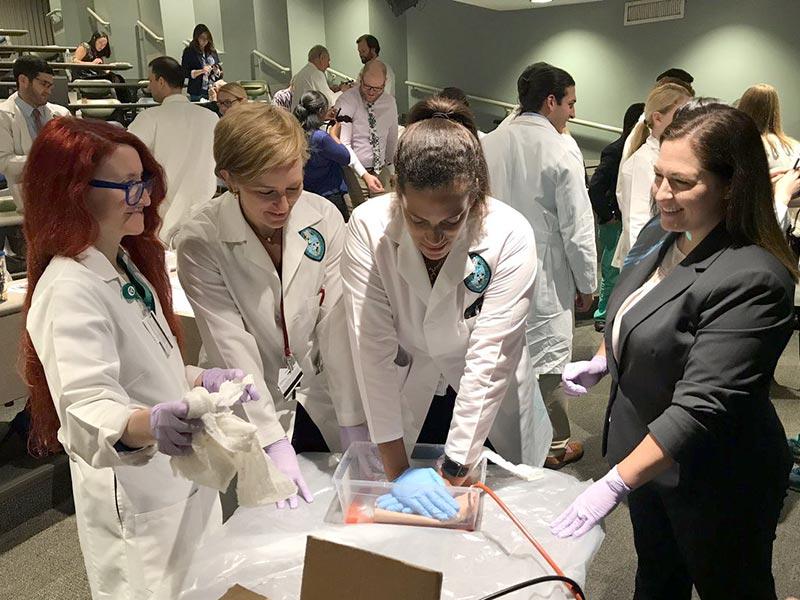Trauma course added to medical school curriculum
When a gunman attacked members of Congress at a baseball practice in June, a lawmaker who served in Iraq was able to deliver critical aid to victims before emergency responders arrived. The veteran had learned bleeding-control techniques designed to save the lives of those critically wounded on the battlefield.
Now all third-year students at Tulane University School of Medicine will get similar training thanks to a new program launched by trauma surgeons. Students will be required to complete a "Stop the Bleed" course, designed by the American College of Surgeons Committee on Trauma, during their surgery rotation.
"We want to make sure anybody who graduates knows how to stop bleeding whether they have seen it in real life or not," said Dr. Rebecca Schroll, assistant professor of trauma and critical care, who is leading the program. "To our knowledge, we are the first medical school in the country to incorporate this course into the standard medical student curriculum."
The Stop the Bleed program was designed to teach police and first responders how to use tourniquets and other techniques to stop bleeding from gunshot wounds or other life-threatening injuries after an active-shooter or mass-casualty event. The idea to train first responders in trauma care was championed by legendary Tulane trauma surgeon Dr. Norman McSwain.
Schroll hopes that students will pass the knowledge on to others after they graduate by becoming certified instructors.
"Our intention is that all Tulane graduates will be competent in bleeding-control techniques and can comprise a network of qualified instructors who can go out into communities to educate an exponentially expanding number of the lay public, who will be able to stop life-threatening bleeding and save lives.”
Like this article? Keep reading: TUPD learns skills to save lives in active shooter events

